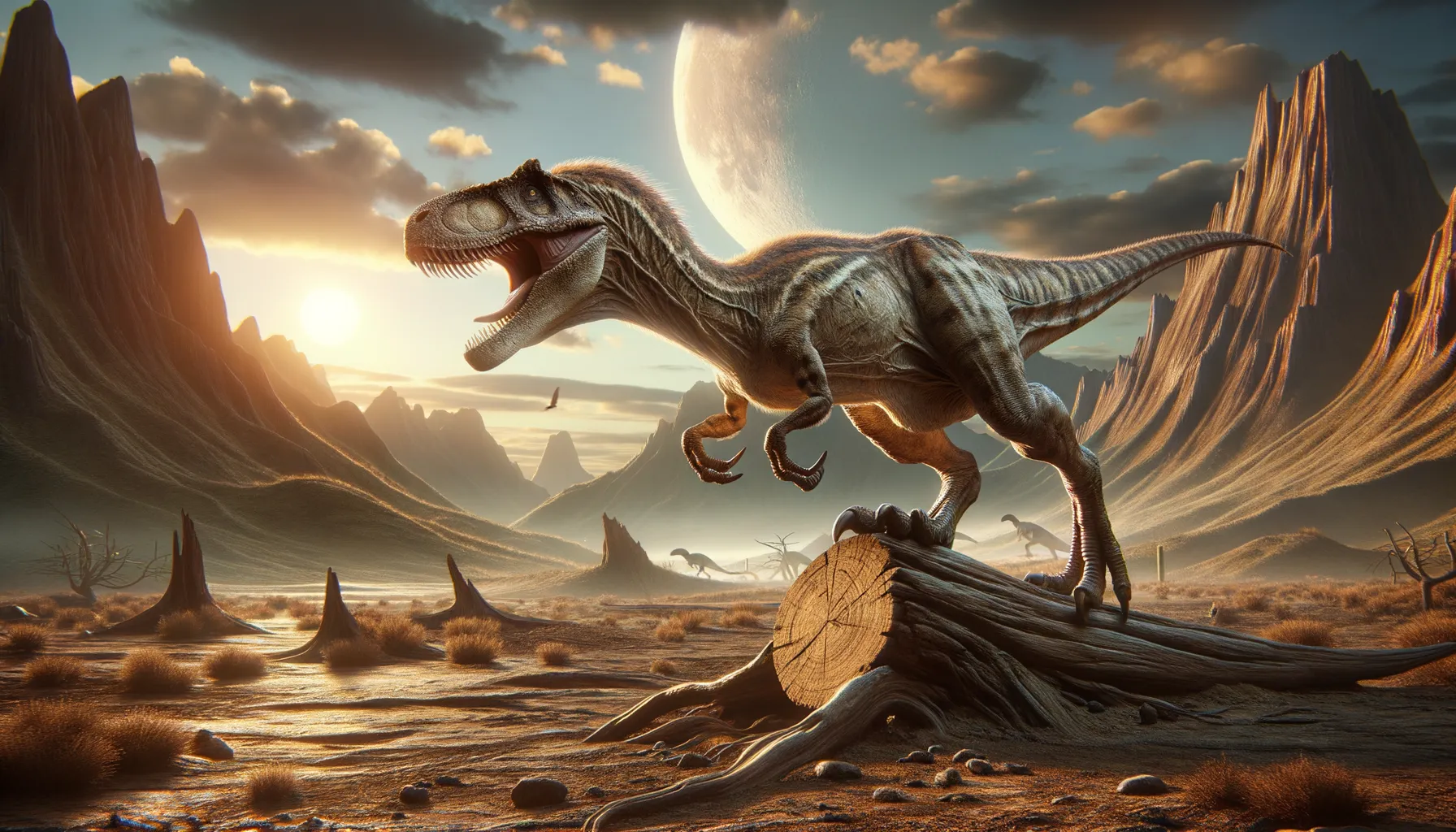
Atrociraptor
Swift predator of the prehistoric forests.
Period
Cretaceous
Length
Reached lengths of up to 6.5 feet.
Height
Stood roughly 3 feet tall at the hip.
Weight
Estimated to weigh about 15 kilograms.
Atrociraptor was a small but fierce carnivorous dinosaur that lived during the late Cretaceous period. Known for its agility and sharp teeth, it is thought to have been an effective predator. It shared its environment with various other dinosaur species and its fossils have provided key insights into dinosaur diversity and behavior during this era.
Diet
Atrociraptor was a carnivore, primarily feeding on small to medium-sized animals. Its diet likely included small mammals, other reptiles, and possibly even insects, making it an adaptable predator.
Hunting
It likely relied on speed and stealth to ambush its prey. Its sharp teeth and agile form suggest it was capable of quick, decisive strikes, possibly hunting in packs to overwhelm larger animals.
Environmental challenges
Atrociraptor faced various environmental challenges such as climate changes during the Cretaceous period. These changes could have affected prey availability and habitat structure. Competition with other carnivorous dinosaurs might have also posed significant survival challenges, requiring adaptability in hunting strategies and habitat selection.
Speed
Likely very fast, aiding in hunting prey.
Lifespan
Estimated to be around 15 to 20 years.
First discovery
Discovered in the Horseshoe Canyon Formation in Alberta, Canada in 1995.
Fun Facts
- Atrociraptor means 'savage robber', reflecting its fierce nature.
- This dinosaur lived approximately 70 million years ago during the Late Cretaceous period.
- Atrociraptor was relatively small compared to other dinosaurs, estimated to be about 6.5 feet long.
- Its fossils were first discovered in Alberta, Canada, highlighting the rich dinosaur heritage of the region.
- Despite its name, Atrociraptor had plumage similar to birds, linking it to modern avian species.
- Like many theropods, Atrociraptor is believed to have been a carnivore, preying on smaller animals.
- Atrociraptor's sharp claws and teeth suggest it was an agile and effective predator.
Growth and Development
Atrociraptor hatched from eggs, with juveniles undergoing rapid growth to reach maturity. Fossil evidence suggests a relatively short developmental period, allowing young individuals to quickly enter the adult population. This rapid growth would have been essential for survival in a competitive environment.
Habitat
Atrociraptor inhabited regions that were once lush, warm, and forested areas. These environments provided ample cover for both hunting and hiding from larger predators. It coexisted with a variety of other dinosaur species, indicating a rich, biodiverse habitat supported by abundant resources.
Interaction with other species
Atrociraptor interacted with various species in its ecosystem. As a predator, it would have been both a threat to smaller animals and prey for larger carnivores. Its presence likely influenced the population dynamics of other species, contributing to the ecological balance of its habitat.
Natural lifespan
The natural lifespan of Atrociraptor was likely around 15 to 20 years.
Reproduction
Atrociraptor likely laid eggs, with the potential for complex nesting behaviors as seen in some other theropods. Parental care might have included guarding the nest and possibly feeding or protecting the young, similar to modern bird behavior.
Social behaviour
There is evidence suggesting Atrociraptor may have hunted in groups, indicating some level of social behavior. This pack-like behavior would have increased hunting success and provided protection against larger predators. However, it may also have engaged in solitary activities, particularly outside of hunting.
Fossil locations
Fossils of Atrociraptor have primarily been found in the Horseshoe Canyon Formation in Alberta, Canada. These fossil remains consist mostly of skull fragments, providing critical insight into its morphology and classification within dromaeosaurids. The discoveries in this region highlight the rich fossil heritage and diversity of the area during the late Cretaceous period.
